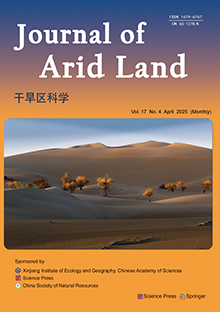The olive species (Olea europaea L.) is an ancient traditional crop grown under rainfed conditions in the Mediterranean Basin. In response to the growing national and international demand for olive oil, the olive cultivars are introduced into highly arid new bioclimatic areas. Subsequently, the morpho-physiology and phytochemistry of olive trees are potentially changing among cultivar types and geographical conditions. In the present work, we have undertaken an assessment on the impacts of geographical location and cultivar types on the leaf morpho-physiology and phytochemistry of olive trees. Thus, leaves of the two most cultivated olive tree varieties, Chemlal and Sigoise, were collected from three geographical regions (Setif, Batna, and Eloued) with increasing aridity in Algeria. Leaf samples from the geographical regions were analyzed using the standard physiological experiment, colorimetric method, and a chromatography assay. Leaves of both cultivars exhibited a significant variance in terms of the leaf shape index but not for the leaf tissue density, specific leaf weight, and specific leaf area. Photosynthetic pigment contents were affected by both cultivar type and geographical location, with the lowest pigment content recorded in the Sigoise cultivar from the Setif region. Compared with the Setif and Batna regions, dried leaves of both cultivars from the Eloued region showed the higher levels of the total polyphenol, total flavonoid, and total tannin, as well as a better antioxidant capacity. Liquid chromatography-mass spectrometry analysis of all leaf extracts identified the following phenolic acids as major compounds: oleuropein, naringin, apigenin-7-O-glucoside, kaempferol, quercetin, quercitrin, luteolin-7-O-naringenin, and quinic acid. Lower contents were found for p-Coumaric acid, trans-Ferulic acid, hyperoside, rutin, apigenin, caffeic acid, protocatechuic acid, o-Coumaric acid, and gallic acid. Also, epicatechin and catechin+ were not found in the leaf extracts of the Sigoise cultivar. The leaf organic extracts in both cultivars displayed promising anti-cancer activity that was affected by geographical location and organic solvent polarity. Briefly, although increasing aridity and soil organic and mineral deficiency affected the leaf morpho-physiological parameters, both cultivars sustained a chemical richness, a good antioxidant, and an anti-tumoral capacity in leaves. Furthermore, the findings revealed that regardless the olive tree genotype, there was a significant impact of geographical location on the leaf morpho-physiology, bioactivity, and chemical composition, which may consequently modulate the growth and oil production of olive trees.
 IF(JCR): 2.7 (Q3)
IF(JCR): 2.7 (Q3)